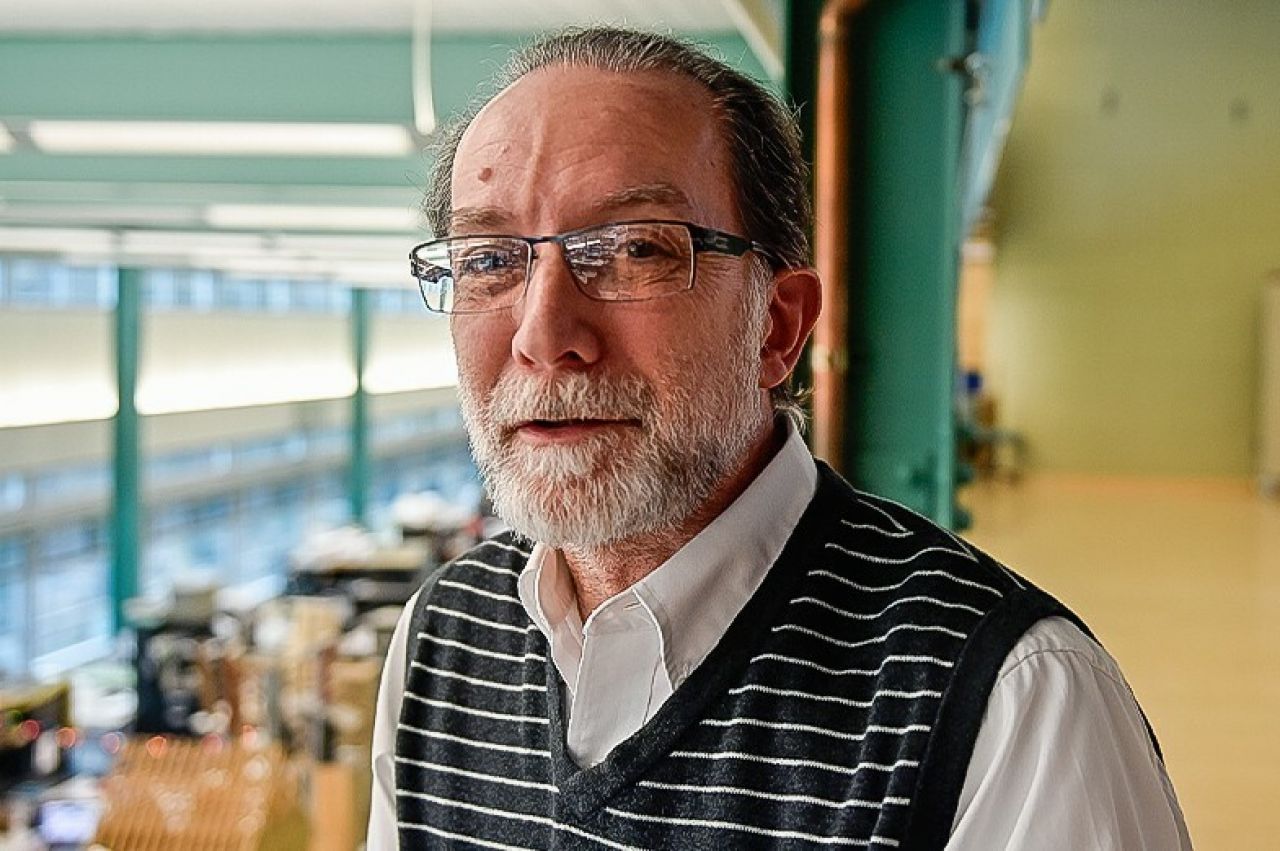December 19, 2023
Arts and architecture librarian to retire after 23 years at Penn State

Henry Pisciotta will retire on Jan. 5 after 23 years at the Penn State University Libraries and nearly 50 years working in arts libraries.
UNIVERSITY PARK, Pa. — Henry Pisciotta, arts and architecture librarian with Penn State University Libraries, will retire on Jan. 5 after 23 years at Penn State and nearly 50 years working in arts libraries. He has supported areas of architecture, art education, art history, graphic design landscape architecture, photography and visual arts within the University.
Pisciotta was instrumental in the College of Arts and Architecture’s transition from slides to digital images in 2000, having secured nearly $800,000 in funding from the A.W. Mellon Foundation for the project shortly after he was hired.
He was also a pivotal member of the design committee for the then-newly planned Stuckeman Family Building, which would bring the Departments of Architecture and Landscape Architecture together under one roof in 2003-04 as the Stuckeman School.
“Designing a building full of designers took twice as long as other Penn State buildings,” he said. “There were several delays to the building as we would go over budget and I remember saying to the committee ‘If we need to move the architecture and landscape architecture materials to the main library, we could make it work,’ but everyone was adamant that we needed a library space in the new building.”
As the Stuckeman School expanded to include the graphic design program, which has since become a department, Pisciotta orchestrated the transfer of selected graphic design publications from the main University Library into the Architecture and Landscape Architecture Library space in the Stuckeman Family Building.
“It is very much a ‘hot spot’ for those more popular materials that students are likely to be seeking,” he said.
In his role, Pisciotta has worked closely with faculty to coordinate teaching materials, as well as precedence materials for research projects. One of his of favorite projects has been a multi-year effort with Ute Poerschke, professor of architecture, that deals with local architect A. William Hajjar’s Air-Wall project. Hajjar, who joined the Department of Architecture at what was then known as the Pennsylvania State College (now Penn State) in 1946, developed building designs with double-skin facades to advance solar heating in architecture.
“In 2015, I visited an exhibit on architect A. William Hajjar at the Penn State Libraries, which showcased a beautiful 1959 hand-colored rendering titled ‘Air-Wall’ next to the many residential works Hajjar is known for,” said Poerschke. “The drawing was a big surprise to me assuming that such a wall configuration was implemented for the first time in a 1980 building in the United States.”
“Sharing my surprise with Henry was the start of our research collaboration, which made us revisit the entire Hajjar estate to detect a wealth of Air-Wall research, including a prototype test building that was constructed on the Penn State campus in the early 1960s,” she continued.
The project was supported by a Raymond A. Bowers Program grant and resulted in conference presentations, an exhibit, and scientific and non-scientific publications.
“We still have plenty of untapped material on Hajjar’s Air Wall and on historical double-skin projects reaching back as far as 1900,” said Poerschke. “Our shared passion makes me confident that we will continue working for many more years on this and maybe other topics together. Thank you, Henry!”
Pisciotta said the Hajjar project resonated with him and that he plans to continue pursuing such historical projects once he retires.
“It has been really incredible to pore through materials over the years and continue to come up with new examples of Hajjar’s design principles,” he said. “Working on projects like this and witnessing the tremendous growth in the research that’s being done in the Stuckeman School and the School of the Visual Arts over the years has been truly amazing.”
Pisciotta served on numerous task forces, committees and advisory boards during his time at Penn State for units including the Palmer Museum of Art, Department of Art History and the Office of the Physical Plant.
Prior to his appointment at Penn State, Pisciotta was with Carnegie Mellon University Libraries where he started as a fine arts librarian in 1982. In 1987, he was promoted to head of fine arts and special collections, a position he held until he left for Happy Valley in 2000.
Pisciotta earned his master’s degrees in art history and library science from the University of Minnesota while serving as a research fellow in the university library system. He earned his bachelor’s degree in theatre from Drake University.
In retirement, Pisciotta plans to pursue passion projects while spending more time with this wife of nearly 45 years, Erika Linke, who recently retired as the associate dean of libraries at Carnegie Mellon. The couple’s daughter, Rachel Pisciotta, is on the staff of the University of Pittsburgh Libraries.